Exploring the Allure of 'The Phantom of the Opera'
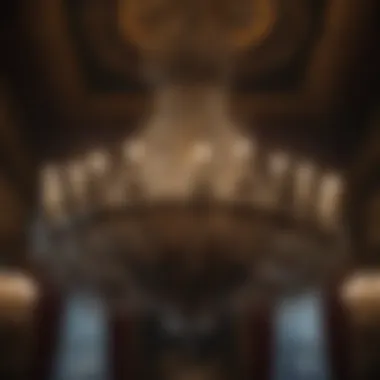
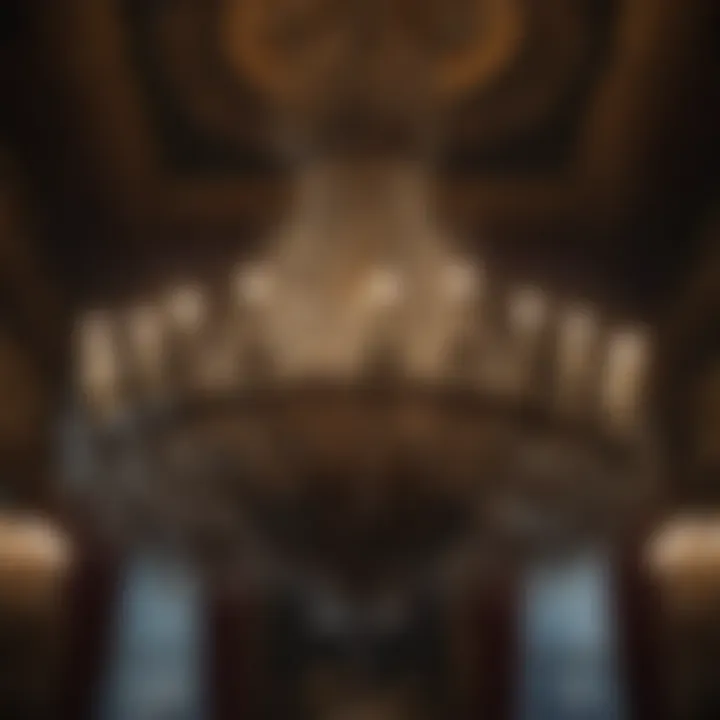
Intro
In the realm of musical theatre, few stories have captured the imagination as profoundly as Andrew Lloyd Webber's The Phantom of the Opera. This tale, set against the opulence of the Paris Opera House, weaves a rich tapestry of love, obsession, and sorrow, inviting both audiences and critical thinkers alike to ponder its layers of meaning. With lush melodies and haunting lyrics, this work has transcended its original stage, influencing countless adaptations and inspiring generations of music lovers.
To truly appreciate the magnum opus that is The Phantom of the Opera, one must first understand the architect behind it—Andrew Lloyd Webber. His unique blend of classical and contemporary musical influences, coupled with a keen sense for dramatic storytelling, sets him apart in the world of theatre. In this article, we will traverse the intricate pathways of this masterpiece, examining not only its majestic narrative, but also its profound impact on the cultural fabric of the performing arts.
Artist Profile
Biography and Background
Andrew Lloyd Webber, born on March 22, 1948, in London, England, grew up in a household steeped in music. His father, a composer and a music teacher, played a significant role in fostering Webber's passion for composition from an early age. Following his studies at the Royal College of Music, Lloyd Webber quickly emerged as a prominent figure in musical theatre. With hits like Jesus Christ Superstar, Evita, and Cats, he carved a niche that would ultimately lead to the creation of The Phantom of the Opera in 1986.
Lloyd Webber's career is not merely a list of achievements; it reflects a deep and abiding love for the art of storytelling through music. Having garnered numerous awards, including Tony Awards and an Academy Award, he remains a titan in musical theatre—a title well-deserved considering the emotional depth his works often encapsulate.
Major Influences and Inspirations
Lloyd Webber's influences are as vast as they are intricate, drawing inspiration from various sources, which lend a unique flavor to his music. Some of the major influences include:
- Classical Composers: The likes of Mozart and Puccini resonate deeply within his compositions, evident in the opera-inspired nuances present in many of his works.
- Literature and Poetry: The storytelling aspects of his musicals frequently reflect literary influences, with The Phantom of the Opera itself based on Gaston Leroux's novel.
- Josephine Baker and the Jazz Age: The rhythmic and melodic intricacies echo the vibrant sounds of 1920s Paris, where the narrative unfolds.
Ultimately, Lloyd Webber's eclectic blend of influences not only shapes the richness of his musical styles but also serves as a testament to his artistry.
Song Analysis
Theme and Lyrics Breakdown
At its core, The Phantom of the Opera is a tragedy that unravels complex human emotions—love, longing, and despair. The lyrics often mirror this turmoil, inviting listeners to not just hear but feel the weight of desire and fear. For example, in the iconic song "Music of the Night," the Phantom serves as both a romantic figure and a symbol of darkness:
"let your darker side give in."
This lyric encapsulates the duality of his character, embodying both seduction and malevolence. The themes of isolation and yearning are powerfully articulated through the haunting melodies that linger long after the final note.
Instrumentation and Composition
The score of The Phantom of the Opera is a masterclass in orchestration, blending symphonic elements with theatrical flair. Key components include:
- Grand Orchestration: Strings and brass create an atmosphere of opulence, setting the stage for the drama to unfold.
- Choral Elements: The use of choirs in certain numbers intensifies the emotional stakes, echoing the grandeur of the opera house itself.
- Signature Melodies: Memorable motifs recur throughout the musical, seamlessly connecting different narrative threads.
This intricate arrangement of instrumentation not only enhances the storytelling but also deeply entwines with the emotions of the characters, allowing the audience to resonate with their struggles.
Closure
As we peel back the layers of The Phantom of the Opera, we recognize it as more than a mere musical; it stands as a cultural phenomenon, an exploration of the human condition in its many forms. Andrew Lloyd Webber’s artistry invites us into a world both beautiful and tragic, reminding us of the complexities of love, acceptance, and the shadows we often cast.
By understanding the man behind the curtain and the intricacies of his music, we can appreciate why this work continues to thrive—its ability to transcend time and touch hearts remains undeniably intact.
The Genesis of 'The Phantom of the Opera'
Delving into the origins of The Phantom of the Opera reveals the foundational elements that breathed life into this timeless story. Understanding its genesis is critical to appreciating the complexities woven throughout its narrative, music, and cultural significance. It’s like peering into the attic of a grand old mansion; every creak in the floorboards and whisper of the wind tells a story, rich with history and intrigue. This section will explore the roots of the tale, including its literary beginnings, the vision that shaped it, and the artistic influences that contributed to its legacy.
Origins of the Story
Gaston Leroux's Novel
The heart of The Phantom of the Opera beats within Gaston Leroux's 1910 novel. This seminal work laid the groundwork for the tale's mythos, depicting a world where love intertwines with horror. Leroux’s portrayal of the Phantom isn’t merely that of a tragic figure; it is also a commentary on beauty and degradation, spotlighting how society's views on appearance can shape one's destiny. The key characteristic of Leroux's novel is its blend of gothic horror with melodrama, creating an atmosphere thick with tension and emotion. It is a captivating choice for our exploration, for this blend sets up a narrative that is at once haunting and evocative.
One unique feature of this novel is its frame narrative—a story within a story—that adds layers and depth. This approach highlights the intricacies of truth versus illusion. While readers might find it advantageous in building suspense, it can also pose challenges for those not used to piecing together multiple narratives.
Early Adaptations
Before Andrew Lloyd Webber's musical, the story saw various adaptations that teetered between faithful retellings and radical reimaginings. Early adaptations, from silent films to stage plays, contributed to shaping the public’s perception of the story. Importantly, these adaptations maintained the essential elements of romance and tragedy while significantly altering character arcs and themes. The notable aspect of these adaptations is their ability to highlight different facets of the original tale, making them a valuable reference point.
The advantage of these adaptations is their role in keeping the Phantom's legend alive across different cultures and art forms. However, it can also lead to fragmentation, where audience members may have differing interpretations based on which version they first encountered.
Cultural Context of the Time
Understanding the climate in which Leroux wrote is fundamental. The early 20th century was marked by a budding fascination with the supernatural, alongside rising interests in the psychological and societal dynamics of human emotion, often reflecting tumultuous themes of love, obsession, and isolation. This period provided the backdrop against which The Phantom of the Opera emerged. The novel not only entertains but also prompts readers to reflect on its societal implications.
The key characteristic of this cultural climate is its sensitivity toward issues of personal identity and societal expectation—elements that resonate deeply in the narrative. Catering to these themes makes it a vital component of our article, enriching the reader's understanding of why the tale of the Phantom endures. The unique atmospheric influences, with their accompanying concerns about classism and individual struggle, create an advantageous framework through which to appreciate the ongoing dialogue between the story and its audiences.
Andrew Lloyd Webber's Vision
The Musical's Development
Andrew Lloyd Webber’s vision for The Phantom of the Opera transformed the novel into a vibrant spectacle that would enthrall audiences worldwide. From the initial inspiration drawn from Leroux’s text, he integrated lavish visuals and complex melodies to evoke the emotional landscape of the story. The key aspect of this musical development is its ambitious melding of rock, classical, and operatic styles—a heady concoction that breaks boundaries.
This unique feature adds an emotional depth that captures the tension between characters and their desires. While it is often praised for its grandeur, the complexity it introduces can be a double-edged sword. Newcomers might find aspects overwhelming, yet aficionados appreciate the intricacies and innovations that Webber brings to the stage.
Collaborations with Creatives
One cannot overlook the collaborative spirit that emboldened Webber's work. Engaging with lyricist Charles Hart and director Hal Prince, among others, the production evolved into a multifaceted artistic achievement. Each collaborator brought their insights, infusing the production with a sense of cohesiveness and depth.
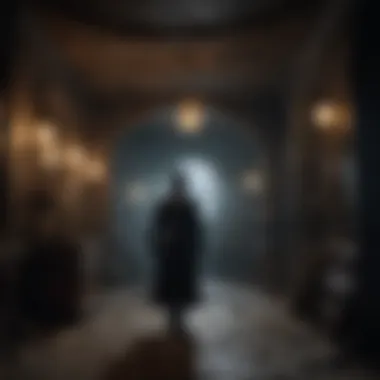
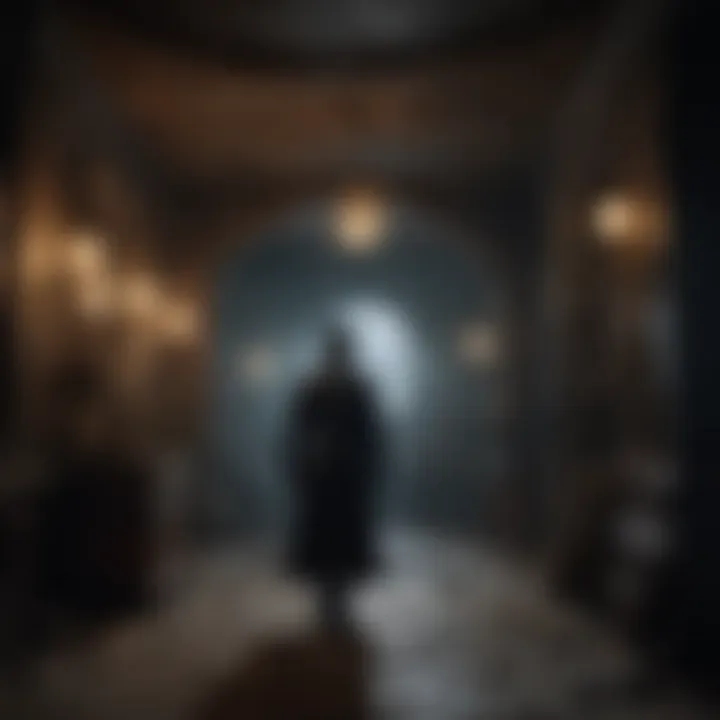
The essential characteristic here is the convergence of different artistic voices, lending a richness that would not be possible through a singular perspective. This creative synergy is advantageous, as it pushes boundaries and fosters innovation. However, it can also lead to creative tensions, whereby differing visions might clash, yet often these clashes result in the most compelling art.
Webber's Influences
Webber was significantly influenced by a tapestry of musical styles and previous theatrical works. He embraced the lush scores of 19th-century operas, as well as the popular music of his time, establishing a bridge across genres. This eclectic mix contributes to the musical’s unique identity, as it resonates with a broad audience.
A notable aspect of Webber's influences is his ability to synthesize diverse sounds into something wholly original. This characteristic makes The Phantom of the Opera not only a product of its influences but also a catalyst for new work in musical theatre. While this wide-ranging influence enriches the narrative, it also runs the risk of diluting distinctive stylistic choices of the piece, a balance that requires thoughtful consideration.
"The creation of The Phantom of the Opera can be viewed as an act of love and obsession in itself, echoing the very themes it presents."
Through this exploration of the genesis of The Phantom of the Opera, we set the stage for a richer understanding of the narrative’s unfolding layers, ensuring that each beat resonates with intent and artistry.
Narrative Structure and Themes
In a tale as multifaceted as "The Phantom of the Opera," the narrative structure and themes play a pivotal role in delivering an emotional experience. The narrative structure enables the audience to immerse themselves in the world of the Paris Opera House, filled with intrigue, glamour, and darkness. Through a detailed exploration of plot points and core themes, the audience uncovers the intricate layers that contribute to the haunting allure of the musical.
Key Plot Points
Prologue of Characters
The introduction of characters in "The Phantom of the Opera" is crucial for setting the tone and engaging the audience. The musical opens with a vivid portrayal of the Paris Opera House, quickly giving insight into its complexities. Key characters such as Christine Daaé, Raoul, and the Phantom are introduced in a manner that highlights their motivations and relationships with one another. Each character serves as a representation of different facets of love and conflict, enriching the narrative.
- Key Character Traits
Christine is portrayed as innocent yet strong-willed, while Raoul embodies conventional masculinity and heroism. The Phantom, on the other hand, is a figure of mystery, underlying love, and obsession. - Benefit of Strong Characterization
This deep characterization makes the audience empathize with their struggles and growth throughout the story. The detailed development of each character invites the audience to invest emotionally, creating a captivating experience.
Conflict and Resolution
The conflict in "The Phantom of the Opera" drives the narrative forward while highlighting themes of love and obsession. The struggle between the Phantom and Raoul is not just a physical confrontation but represents the clash between raw passion and social acceptance.
- Crucial Aspect of Conflict
The personal conflict experienced by the Phantom reflects his inner demons and the tragedy of his existence. This poignant portrayal elicits a mixture of fear and sympathy in the audience, compelling them to examine their preconceptions of love and obsession. - Unique Feature of Resolution
The resolution is complex and imbues a sense of melancholy. Rather than offering a simple happy ending, it prompts the audience to reflect on the nature of love, loss, and sacrifice, making it a compelling narrative choice.
The Journey of the Phantom
The Phantom's journey is an evocative exploration of his descent into isolation and despair. Initially portrayed as a villain, the Phantom's arc gradually reveals the depth of his passion and the painful consequences of his life choices.
- Ellaborate Character Arc
His journey highlights the tragic elements of his character, allowing the audience to see the duality of love: it can elevate but also ensnare. - Engagement with the Audience
This duality captivates the audience, as they grapple with feelings of pity and fear in response to his actions. The gradual discovery of his tragic backstory enhances the narrative's emotional complexity.
Core Themes Explored
Love and Obsession
Love and obsession are central themes that permeate the narrative of "The Phantom of the Opera." The relationship between Christine and the Phantom exemplifies how love can become all-consuming, blurring the lines between passion and possession.
- Insight into Character Dynamics
The contrast of Raoul's protective love and the Phantom's desperate obsession provides insight into the theme's deep-rooted nature within human relationships. - Significance for the Narrative
This exploration becomes a key aspect, revealing the fragility of love and how it can lead individuals towards darker paths, enhancing the emotional investment of the audience.
Isolation and Identity
Isolation serves as a powerful catalyst in the unfolding of the Phantom’s identity. His physical and emotional seclusion culminates in a sense of tragedy that marks the narrative’s core.
- Reflecting Societal Issues
The theme of isolation resonates strongly, as it mirrors societal rejection and expectations of identity, making it relatable for many audiences. - Resistance and Transformation
The transformation of characters in response to their isolation highlights the potential for growth or further despair, adding layers of complexity to the story.
Art versus Commerce
The tension between art and commerce is intricately woven into the fabric of the musical. The Opera House represents this conflict, reflecting the struggle of artists trying to remain true to their vision while appeasing commercial interests.
- Artistic Integrity at Stake
This theme invites contemplation on the sacrifices artists make in pursuit of their passions, ultimately resonating with those within creative fields. - Impact on Audience Perception
The conflict between artistic ambition and commercial realities encourages the audience to reflect on the larger implications of creativity in society.
Thus, the exploration of narrative structure and themes in "The Phantom of the Opera" is fundamental for uncovering the layers of meaning embedded within the musical. The emotional weight carried by the characters and their conflicts transforms the tale into a lasting piece of art that continues to resonate with audiences across generations.
Musical Composition and Innovation
The musical aspects of 'The Phantom of the Opera' stand as a testament to Andrew Lloyd Webber's ingenuity and skill. Music is not just an accompaniment in this production; it serves as a vehicle for expressing deep emotions, developing characters, and narrating the story. This section will explore the specific elements that contribute to the innovation within the musical composition, illustrating why this remains one of the most beloved works in musical theatre.
Signature Musical Numbers
The Phantom's Theme
The Phantom's Theme is not just a motif; it encapsulates the essence of the Phantom's character. This haunting melody is characterized by its sweeping orchestration and emotional depth, which sets a dramatic tone for the audience. The theme resonates with feelings of longing and despair, crucial for understanding the Phantom's tumultuous journey through love and isolation. Its repetition throughout the musical creates a sense of familiarity and emotional connectivity, drawing listeners into his world. The unique feature of this theme is how it captures both darkness and beauty, highlighting the Phantom's multifaceted persona. However, the complexity of the music may pose challenges for novice musicians attempting to replicate its nuances.
All Ask of You
A likeable contrast to the Phantom's darker themes, All I Ask of You stands out as a beacon of hope and love. This song is marked by lyrical sincerity and harmonious melodies, contributing to its popularity among audiences. It embodies the tender relationship between Christine and Raoul, showcasing the idea of protection and devotion. The simplicity of its structure allows it to resonate widely, becoming a memorable moment in the musical. However, its straightforwardness could be seen as less innovative compared to the more complex musical numbers. In this context, it provides a necessary balance of light amidst the overarching darkness.
Music of the Night
Music of the Night functions as a captivating invitation into the Phantom's secretive world. This piece stands out due to its seductive rhythm and mystical quality, making it an iconic moment within the show. The combination of lyrical imagery and thematic content plays a pivotal role in illustrating the Phantom's seductive yet tragic nature. It draws the audience into his enchantment, using music as a storytelling device. The challenge with this piece lies in its vocal demand; it showcases a range that can be quite taxing for performers but also elevates the overall quality of the production.
Innovative Use of Music
Orchestral Arrangements
The orchestral arrangements in 'The Phantom of the Opera' contribute substantially to its artistic innovation. They encompass a blend of romantic and contemporary styles, creating a rich tapestry of sound. It incorporates string sections, brass, and woodwinds, which gives the music a lush quality, transforming each scene into an emotional experience. This depth of arrangement provides the audience with a more engaging listening experience, as the orchestral soundscapes are intricately tied to the characters' experiences. A downside, however, might be the potential for overwhelming some listeners who could find the music dense and hard to follow.
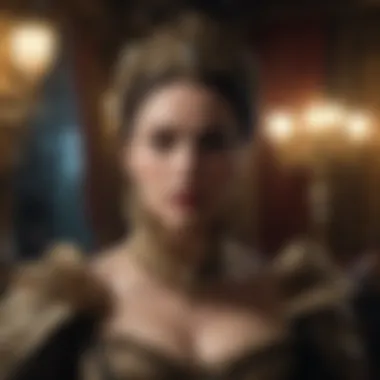
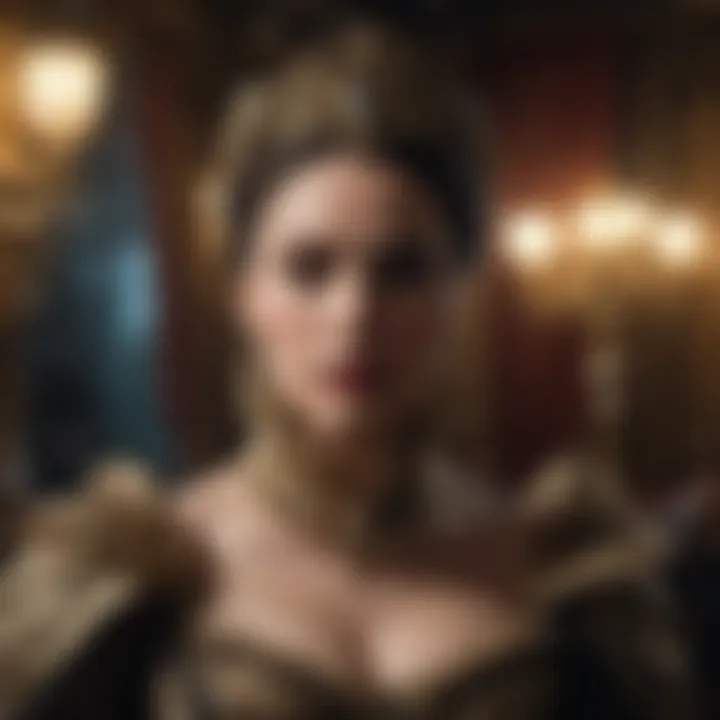
Vocal Techniques
Vocal techniques employed in 'The Phantom of the Opera' push the boundaries of traditional musical theatre. They include demands for powerful belts and delicate falsettos, allowing performers to explore a wide emotional range. This variety showcases the heights of human expression and enhances the storytelling by giving voice to the characters' innermost feelings. Nevertheless, not every singer can master such a broad spectrum, which might limit who can play iconic roles like Christine or the Phantom effectively.
Integration of Themes
The integration of musical themes throughout the production contributes to a richer narrative framework. Each recurring motif aligns with specific characters or emotional arcs, cultivating a deeper understanding of the story. The clever interweaving of themes allows for foreshadowing and emotional resonance, enhancing both audience engagement and thematic coherence. While this technique enriches the overall experience, it may pose challenges in terms of clarity for those not thoroughly familiar with the narrative structure, potentially leaving some audience members in confusion.
In summary, the innovative musical composition in 'The Phantom of the Opera' utilizes signature numbers, sophisticated orchestration, and vocal techniques to create a sweeping emotional landscape. Each element contributes to a deeper understanding of the narrative, shaping how audiences experience the tale and its characters.
Character Analysis
Analyzing characters in ‘The Phantom of the Opera’ is crucial not only for understanding the plot but also for unpacking the complex themes at play. Each character serves as a vessel for various emotional and psychological explorations, making them essential to the narrative. The characters bring forth the conflicts of love, obsession, and moral ambiguity, anchoring the audience's experience. This section will delve into the primary characters who shape the story, laying bare their motivations, struggles, and growth throughout the musical.
The Phantom
Psychological Depth
The psychological depth of the Phantom is profound and multifaceted. At the core, he embodies the torment of isolation coupled with intense longing for love and acceptance. His dual nature — part genius and part monster — makes him relatable and terrifying simultaneously. This depth contributes significantly to the audience's empathy, leading them to grapple with their feelings towards him.
His emotional complexity is a key characteristic that invites viewers to examine their understanding of love and beauty. The Phantom showcases a unique feature in that he operates within the tensions of romantic desire and monstrosity, making the discussion around him particularly rich for analysis. The main advantage of focusing on his psychological makeup is that it provides a lens through which audiences can explore the darker corners of human existence without resolution.
Symbol of Tragedy
The Phantom serves as a symbol of tragedy. His life story is not just about unrequited love but also about the profound sadness due to his isolation and rejection from society. This tragic element elevates the narrative, allowing audiences to witness not just horror but the palpable sorrow that underscored his actions.
Highlighting the character as a symbol of tragedy invites discourse about the human condition. His life raises questions about what it means to be truly seen and accepted, marking him as a beneficial focus within the article. The unique feature of viewing the Phantom through this lens is that it emphasizes the universality of his experiences, making his story resonate across varying demographics. However, one downside lies in potentially romanticizing his destructive behavior under the guise of tragedy, which warrants critical examination.
Ambiguity of Morality
The ambiguity of morality surrounding the Phantom is a critical aspect of his character. He blurs the lines between hero and villain, prompting audiences to question their own moral compass. Is he justified in his actions due to the pain he suffers, or does his descent into villainy absolve him of any sympathy? This moral grayness allows for a richer conversation about inherent human flaws and societal judgment.
This characteristic of ambiguous morality is beneficial for analyzing audience reactions and ethical dilemmas faced in both the story and real life. The unique aspect of the Phantom’s moral ambiguity is that it forces characters — and audiences alike — to confront their biases and fears about the unknown. However, this ambiguity can also lead to discomfort, as it may challenge preconceived beliefs about morality and justice.
Christine Daaé
A Journey of Empowerment
Christine's character presents a compelling journey of empowerment. Starting as a seemingly fragile young woman, she learns to harness her voice and make choices that shape her destiny. This journey is significant because it illustrates themes of growth and self-discovery, resonating deeply with audiences seeking inspiration.
The key characteristic of her empowerment journey is its relatability, as many individuals can identify with the struggle of finding their voice. What's unique about this discourse is how it invites audiences to reflect on their lives regarding personal and creative empowerment, marking it as a beneficial focus in the article. However, one disadvantage is that her empowerment is often overshadowed by the dominating figures around her, sometimes reducing her strength to mere reaction.
Role as an Artist
Christine's role as an artist is central to her character. She embodies the passion and struggles of artistic expression, making her relatable to aspiring musicians and performers. This role articulates the dedication required to follow one's passion amidst external pressures.
Her artistic role represents the dichotomy of creativity and commercialism, making it a rich ground for analysis. The unique feature here is that she reveals the internal conflict artists often face between integrity and success. However, this discussion may sometimes overlook the complexity of artistic identity, which can restrict deeper exploration of her motivations.
Conflict Between Two Worlds
Christine finds herself in a conflict between two worlds: the fanciful allure of the Phantom's underground domain and the conventionality represented by Raoul. This tension symbolizes a broader societal struggle between artistic freedom and societal expectations, which is particularly prevalent in the world of performers.
This conflict is a key characteristic that highlights the struggles many face in balancing their aspirations with societal norms. It offers a beneficial perspective allowing readers to analyze their own conflicts more deeply. The unique feature of Christine's struggle is that it is both personal and universal, making her conflict relatable to many. However, it risks oversimplification of her journey if not adequately framed within her character’s complexity.
Raoul
Contrast to the Phantom
Raoul’s character serves as a stark contrast to the Phantom, embodying the archetype of the charming, heroic lover. His presence in the story emphasizes the dangers of obsession and the nature of love. By setting him against the Phantom, who represents darker passions, the narrative raises questions about the nature of true love.
The contrast to the Phantom introduces a critical dialogue about different types of love: passionate versus conventional, possessive versus selfless. Raoul’s character promotes discussions around fidelity and societal expectations in romantic relationships, which is beneficial for the overarching analysis of the piece. This unique feature enables readers to navigate complex relationships in the context of love. However, focusing too much on Raoul's charm could undermine the subtler, more intense emotions of the Phantom, overshadowing some of the musical's more nuanced explorations.
Symbol of Conventional Love
Raoul stands as a symbol of conventional love, showcasing the ideal of romantic heroism often celebrated in society. His character represents safety, stability, and adherence to social norms, which is significant within the context of Christine's choices.
As a symbol of conventional love, Raoul provides a counterbalance to the more chaotic and obsessive love the Phantom offers. The discussion here allows audiences to contemplate what real love looks like, highlighting its complexities. The unique feature of Raoul’s representation is that it reinforces cultural values around romantic relationships, posing both benefits and challenges in interpretation. Critics could argue that his character fails to capture the emotional depth of love.
Character Development
Raoul's character undergoes significant development throughout ‘The Phantom of the Opera.’ Initially characterized by youth and charm, he evolves into a more complex figure as he confronts the reality of Christine's tumultuous emotions. His journey becomes essential in understanding the multifaceted nature of love.
The key characteristic here is that Raoul's development showcases how love is not static but rather a journey filled with challenges and growth. This feature enhances the discussion by pushing readers to consider their own growth in relationships. However, one limitation is that Raoul may serve as a more straightforward archetype than other characters, potentially hindering deeper exploration of his inner conflict.
In summary, the character analysis within ‘The Phantom of the Opera’ enriches the understanding of its themes and emotional depth. Each character — the Phantom, Christine, and Raoul — provides critical insights into the complexities of love, identity, and morality, making the narrative resonant across time and cultures.
Cultural Impact and Legacy
Exploring the cultural impact and legacy of Andrew Lloyd Webber's The Phantom of the Opera reveals its profound significance in the world of musical theatre and beyond. This work is not merely a telling of a story, but a phenomenon that has reshaped how audiences perceive theatrical productions. Rich in musical innovation and layered with complex emotions, the legacy of this title extends into cultural identity, community engagement, and ongoing artistic dialogue.
Reception Over Time
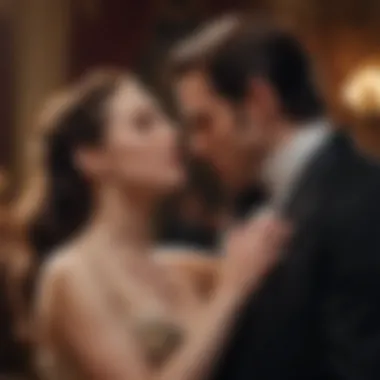
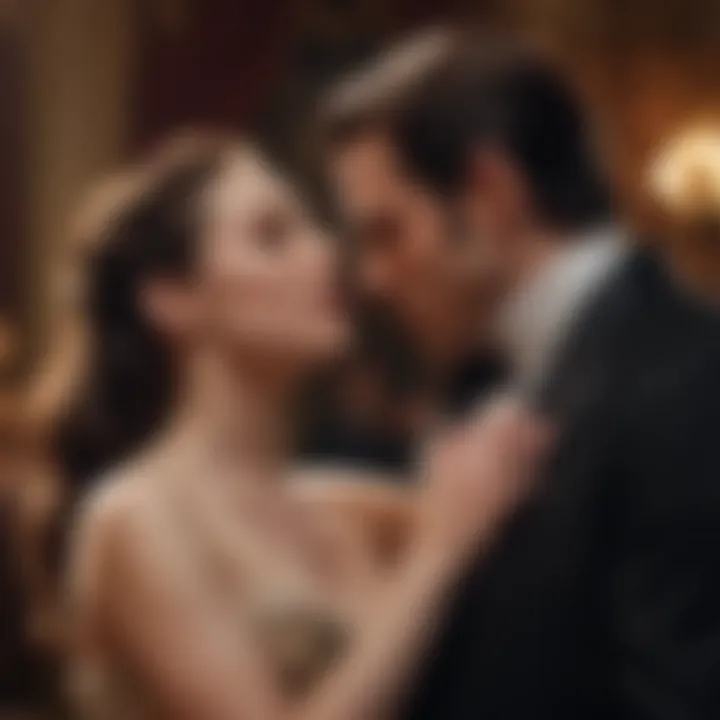
Initial Success and Criticism
When The Phantom of the Opera first opened in London's West End in 1986, it was met with a whirlwind of response. Such a combination of dazzling visual spectacle and haunting music captured audience's hearts, yet critics had their reservations. The initial success was tied intricately to its ability to present an emotionally charged narrative that oscillated between horror and beauty. Critics identified its sweeping melodies and dramatic storytelling as factors that could either enchant or alienate audiences. The rousing reception proved beneficial for the musical's trajectory, helping it earn its place in history, but the intense scrutiny also pointed to the dangers of popularity clouding artistic integrity.
Long-term Recognition
Through the decades, the recognition of The Phantom of the Opera has cemented it as a fixture of musical theatre. Long-term recognition is characterized by the persistence of its allure, drawing in new generations of theatergoers. Many productions, whether local or international, embody the richness of the source material. Its cultural relevance shows how it has remained atop discussions concerning theatre's evolution and that it transcends the stage by becoming part of public conversation and art education. This enduring status continues to invite new interpretations and discussions.
Awards and Honors
Awards received by The Phantom of the Opera contribute significantly to its legacy. It has garnered more accolades than one can count, with notable wins including the Laurence Olivier Award and Tony Awards. These honors reflect not just artistic merit but its cultural impact—art that earns such commendation often leaves an indelible mark on society. Awards also act as benchmarks that inspire future productions striving for similar heights. As acclaimed as it may be, some critiques suggest that awards can be subjective and limit the conversation around other deserving works.
Influence on Musical Theatre
Pioneering Changes in the Genre
One of the most pivotal aspects of The Phantom of the Opera is how it married classical orchestration with contemporary narrative. Pioneering changes seen in this musical led to a redefined understanding of what a musical could encompass. It bridges the gap between operatic grandeur and Broadway accessibility, which has drawn performances from diverse artists seeking to explore this engaging blend. Its influence encourages future works to experiment with form and content, although it can lead aspiring creators to feel boxed into a style that favors grandiosity over more intimate storytelling.
Inspiring Future Works
The echoes of The Phantom of the Opera resonate throughout newer compositions and adaptions. It serves as a template for numerous musicals that prioritize emotional depth, character exploration, and ambitious scores. It has inspired a growing number of adaptations, some reimagined in contemporary settings, all while aiming to capture similar essence. However, the pressure to match its legacy can lead to derivative creations that lack originality.
Cross-disciplinary Effects
The Phantom of the Opera has not only influenced theatre but also permeated various artistic disciplines. Its themes have sparked novel explorations in film, literature, and visual art, among others. Artists working within these areas draw upon the rich emotional and thematic content, interpreting it through fresh perspectives. Yet, there is a risk that too apparent a connection might overshadow original works, creating a dialogue that can sometimes feel repetitive rather than inventive.
Adaptations and Revivals
Film Adaptations
Adaptations for film have allowed The Phantom of the Opera to reach an even wider audience. The cinematic version, directed by Joel Schumacher in 2004, showcased iconic songs while bringing the characters to life with new visual interpretation. While the adaptation received mixed reviews, it undeniably expanded the musical's appeal, attracting audiences who may not typically attend theatre productions. However, translating stage magic to film can often fall flat, lacking the interactive component that live performances thrive upon.
International Productions
Global performances of The Phantom of the Opera exhibit its universal themes of love, longing, and despair, no matter the cultural backdrop. From London to Tokyo to Buenos Aires, each production embodies the essence of the story while often infusing local flair. The international spotlight not only reinforces its reputation but also shows how cultural interpretation can lead to enriching experiences, although there’s the potential challenge of cultural misinterpretation at times.
Modern Interpretations
Modern interpretations continue to breathe new life into The Phantom of the Opera. Reimagining the characters and setting can unveil new dimensions that resonate with contemporary audiences. These reinterpretations serve to rejuvenate the narrative, pulling in younger viewers while addressing relevant societal issues that may not have been prominent in earlier productions. Despite the freshness, there’s the fine line of preserving the original essence while introducing innovative ideas, which can be both thrilling and daunting.
Overall, the cultural impact and legacy of The Phantom of the Opera is a study in how art evolves, interacts, and inspires. Its journey from the pages of a novel to a global phenomenon illustrates the power of narrative and music in shaping both culture and community.
The End and Reflection
The conclusion of an exploration into a work like Andrew Lloyd Webber's The Phantom of the Opera is not merely a summarization but a necessary lens through which we can evaluate its continuing significance. This section allows us to reflect on how a story born out of romance and tragedy continues to resonate deeply with audiences across generations.
Enduring Relevance
Themes Resonating Today
The central themes of The Phantom of the Opera hold a mirror to our contemporary struggles and desires. Love and obsession, two sides of the same coin, encourage discussions about the complexities of human emotions, making these themes eternally relevant. As societal norms evolve, the exploration of these themes offers insights into relationship dynamics that are relatable to many today.
One particular aspect of these themes is the focus on isolation and identity. People often feel like outsiders, much like the Phantom himself—this creates a robust connection with audiences who may grapple with similar feelings of disconnection or longing for acceptance.
Continued Enthusiasm in Audiovisual Media
The consistent interest in The Phantom of the Opera within audiovisual media, such as films, documentaries, and online adaptations, showcases its impressive adaptability. The ability to reinterpret and present the narrative in various formats contributes to a wider audience reach. It allows new generations to explore this classic story while experiencing the music that has captivated countless theater-goers.
What makes this aspect beneficial is the blend of visual storytelling with theatrical performance, which enhances the engagement factor. However, the challenge lies in staying true to the original while adapting to modern sensibilities, ensuring the core of the story remains intact.
The Phantom's Place in Popular Culture
The Phantom has infiltrated popular culture in ways that extend far beyond the theater. References in literature, TV shows, and even fashion highlight how widely this character and his story are embedded in the collective consciousness. The power of the Phantom as a cultural icon sparks conversations about love, longing, and vengeance.
A key characteristic of the Phantom's place in popular culture is its ability to transcend traditional categories of art. This omnipresence signifies the enduring investment in these narratives and characters, even as society's tastes and values shift. However, one must tread carefully as this widespread adoption can dilute the essence of the original tale, leading to a divergence from the nuanced emotional layers that make it captivating.
The Future of the Phantom
Possible Directions for Revival
With the continual evolution of theater and arts, potential directions for revival of The Phantom of the Opera point towards more inclusive interpretations. As society pivots towards a greater emphasis on diversity, adaptations could explore a wide array of interpretations that resonate with multicultural audiences. This allows for a fresh take on the story while inviting critical discourse around its themes.
The desire for innovative storytelling in the revival could also lead to revised musical scores or choreography, enhancing the theatrical experience. However, there is a tightrope to walk: how to remain authentic while simultaneously inviting new perspectives and characters into the narrative.
Evolving Interpretations in New Ages
Each new age brings new interpretations, influenced by the socio-political climates of the times. The evolution of narratives is, at its core, about reflecting what societies value and feel. New helps to examine the Phantom's character through lenses of today's pressing issues like mental health, consent, and identity.
This unique feature can enrich the narrative, allowing for deeper exploration of neither good nor evil, but rather the gray areas in between. On the flip side, there’s a risk of losing the artistic nuance that makes the piece poignant; thus careful consideration is paramount in evolving these beloved stories.
Maintaining the Artistic Integrity
While inviting change is essential, maintaining the artistic integrity of The Phantom of the Opera is equally crucial. Respecting the origins and the emotional gravitas that Webber infused into the score and narrative ensures that any new interpretation honors the essence of the work.
The distinctiveness of this element lies in preserving the original themes amidst modern adaptations, allowing audiences to appreciate the craftsmanship while also experiencing the evolution of storytelling. However, balancing tradition with innovation can be tricky and may raise questions on how much alteration is warranted before losing the spirit of the work.
Each of these aspects—the enduring relevance, the future implications, and the artistic balance—remains pivotal in discussions surrounding The Phantom of the Opera. They invite audiences not just to remember and admire the piece but to actively engage with its themes as they navigate their own lives. The Phantom, then, remains more than a character; he is a reflection of us all.







